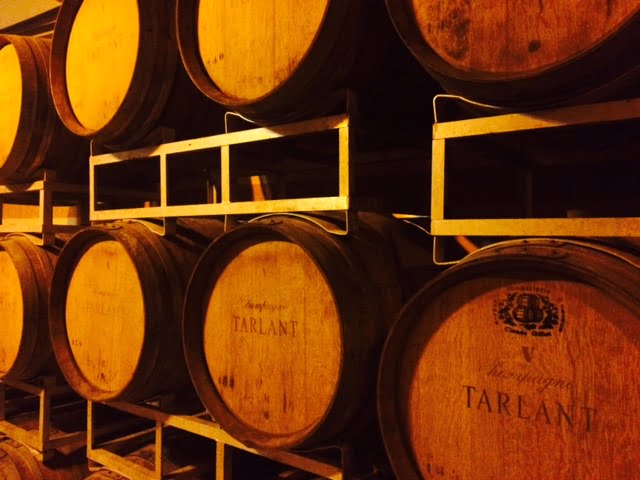It’s synonymous with celebration, perfected with exacting precision and heralded as the highest of quality. Champagne, the wine made from grapes exclusively grown, harvested and turned into tipple in their namesake region (which lies around 150 km east of Paris), is much-loved all around the world. But there is more to Champagne than the clink of a glass and a sigh of satisfaction.
Here are five things that you should know about Champagne. Each tip is paired with a great bottle so you can experience your newfound knowledge first-hand and impress the guests at your next dinner party.
1. The right way to open a bottle of Champagne
I’m sure you know this bit. When opening at bottle of bubbles, tilt it slightly (not in the direction of others) and untwist the metal loop to remove the wire cage and foil wrapping. But here’s the bit you may not have known… holding the cork firmly, gently rotate the bottle (not the cork) with your other hand so the cork comes sliding (not popping) out.
Try your new trick with a bottle of Collett Esprit Couture, a wine crafted entirely by hand from start to finish – including the silver rope trimmings around the top of each bottle. A sophisticated Champagne in a suitably stylish, art deco encasing.
2. The Champagne glasses to choose
Champagne is best enjoyed in a tulip glass, which is tall and bulbous enough to allow the bubbles to develop but narrowing at the top to concentrate the bouquet. Contrary to common conceptions, the flute and saucer-shaped coupe are to be avoided. When pouring Champagne, never fill the glass to more than 2/3 full.
Try a Larmandier-Bernier Rosé de Saignée, a biodynamic rosé Champagne. While most rosés are made by blending white wine with a little red wine from the region, this Rosé de Saignée is made by directly macerating Pinot Noirs. This method of vinification is more demanding and requires grapes with an excellent degree of maturity.

3. Blending Champagne
Three key grapes are under vine in the Champagne region: Pinot Noir, Meunier and Chardonnay. Each wine is composed of one, two or all three types. By blending wines from different grapes, as well as from different years and villages, each cellar-master aims to create a truly distinctive drop.
The blending of wines is highlighted in each glass of Lanson Black Label Brut, a combination of 50% Pinot Noir, 35% Chardonnay and 15% Meunier. The elegant black label symbolises the dominance of the Pinot Noir grapes.
4. Vintage Champagne
In exceptional years, a cellar-master may decide to release a vintage Champagne, which is made exclusively from grapes grown in that year. Each vintage bottle must spend at least three years maturing in a cellar (as opposed to 15 months for non-vintage), with many often maturing for 5-10 years or more.
Dom Ruinart 2004 is composed of Chardonnay grapes from two villages. This vintage initially conveys notes of chestnut, coconut and fresh bread, which give way to aromas of flowers, citrus fruits and minerals.

5. Dosage
Each type of Champagne is determined by its residual sugar content, which is finalised via dosage, the addition of a small amount of ‘liqueur d’expédition’ (a mixture of wine and cane sugar) before corking. Champagne types range from brut nature/dosage zero (less than 3 grams of sugar per litre and no added sugar), extra brut and brut (less than 12 grams per litre), and extra dry (12-17 grams per litre) to sec and demi-sec (17-50 grams per litre) and the very sweet doux (more than 50 grams per litre).
Put your palette to the test with a glass of Tarlant Zero Brut Nature, with no added sugar. This Champagne is particularly fresh and perfect as an aperitif with oysters.

Keen to learn more? The Champagne Bureau Australia is hosting its 2015 Sydney Champagne Masterclass on Monday 14 September at Doltone House, Hyde Park. Hosted by Huon Hooke and Peter Bourne, the class includes tastings of Champagne and canapés to match. Tickets are $85 + booking fee. For more information call (02) 9555 8891 or visit www.champagne.com.au.





